
|

|
|
Home Site Search Contact Us Subscribe
|
|
|
INSIGHT: Can Green Interiors Help Power the Recovery? How the demand for sustainability and long-term value are shifting attitudes in the world of commercial interiors, creating an environment ripe for design professionals with incentives for both landlords and tenants to move the sustainability agenda forward. By Sascha Wagner, IIDA, CID, LEED AP, and Robin Bass, LEED AP February 2, 2010 Despite expectations that the current economic downturn might have a dampening impact on investments in sustainable design, high vacancy rates may instead be contributing to an environment ripe with incentives for both landlords and tenants to move the sustainability agenda forward. The current convergence of technologies, regulations, and fierce competition for tenants is driving building owners to offer greener spaces to a tenant population that is increasingly environmentally aware. The question for both parties is how to do this in a way that makes a meaningful difference to both the environment and the bottom line. With the right resources and approach, this does not have to be an either-or scenario.
The most important time for tenants and building owners to consider green design possibilities is before a lease is signed. Most office leases are base-year leases, which require tenants to pay a pro-rated share of the building’s energy and water expenses based on square footage – not on the amount each tenant actually consumes. Recently, changes in legislation and emerging technologies have driven an increase in tenant sub-metering within high-rise buildings. This has led to the creation of more triple-net leases, in which tenants are assigned their own meters and pay only for the energy and water they actually use. This not only provides a motivation for each tenant to conserve resources and reap the cost savings, but also benefits landlords by enabling them to offer all tenants a fairer deal. Under base-year leases, if one tenant consumes a disproportionate amount of energy or water, the landlord is often forced to charge everyone in the building a higher rate. Creating a relationship where both the tenant and landlord stand to benefit from the building’s energy efficiency sets the stage for a whole new way of looking at the leasing process – and at the role of real estate professionals. Increasingly, brokers are being asked by owners and tenants to resolve issues related to sustainable construction strategies. As a result, organizations like the U.S. Green Building Council (USGBC) and Building Owners and Managers Association International (BOMA International), both based in Washington D.C., have recently offered “green lease” guidelines, suggesting a more equitable approach.
While energy measurement tools, like separate metering, allow for better management of consumption and expenses, upgrades to building infrastructure are often what enable the largest cost savings and have the greatest impact on reducing carbon emissions. This means that landlords, tenants, and their brokers need to discuss complex and possibly costly upgrades to building infrastructure, and how these costs might get passed through to tenants, before closing a lease deal. For example, a new, high-efficiency mechanical system can bring down operating costs. If the typical lifespan of a mechanical system is 30 years, and the tenant is only signing a seven-year lease, then a life-cycle analysis is necessary to amortize the costs appropriately. The challenge is to come to an equitable agreement about sharing the cost of the upgrades – this often involves a more detailed analysis and the help of a broader project team.
A role for design professionals long before lease-signing
In the past, design professionals have typically not been part of the process until after the signing of the lease. Recently however, representatives for both landlords and tenants are more frequently partnering with architects, engineers, and contractors that have sustainability expertise as early as during the site selection process. Design professionals can help clarify the ramifications for both sides on issues of sustainability, since they are usually the ones administering the USGBC’s Leadership in Energy and Environmental Design (LEED) or similar certification programs for subsequent renovations or tenant improvement work. For example, a building owner may be considering an energy management system to reduce energy costs. At first glance this seems like an obvious benefit to the tenants as well. However, determining how complex and feature-rich such a system should be has a considerable impact on its cost. While a tenant may be happy monitoring only their own power usage, the building owner may also want to control additional devices and systems on a building-wide level.
Working out a mutually beneficial approach to these kinds of issues before executing a lease can avoid unpleasant surprises later. Just as sustainability requires the design process to be more collaborative and front-loaded, it also offers the potential for transforming the often adversarial relationship between tenants and building owners to one of partnership and shared responsibility. Sustainability depends on an open, collegial team environment where everyone shares the same agenda and exchanges information freely. Design firms with strong sustainable backgrounds can help the leasing team define their goals and build consensus on the best ways to achieve those goals. This new model of collaboration helps identify potential costs early, distribute them fairly, and create greater value for all participants.
What about savings?
One upside of the current financial climate is the increased attention being paid by consumers, employers, and by local, state, and federal governments to the role of sustainability in our recovering economy. The Obama Administration’s 2009 stimulus agenda incorporates $130 billion in construction-related spending. Funding is slated for a variety of programs aimed at upgrading America’s aging infrastructure, many with embedded environmental requirements. Federal and state funding extends ongoing tax credits for building owners and tenants, such as the green building tax credit available in many states, and provides additional credits for using renewable energy or making other energy-efficient improvements. Additionally, building owners and tenants may qualify for rebates from local utilities for reduced power and water consumption. Of course, pursuing many of these incentives in a commercial office setting will require the same kind of collaboration needed to execute a green lease. And tenants and owners better act fast. Regulatory changes are on their way, and what is an incentive today may be a mandate in the very near future. More and more cities are looking for ways to reduce their carbon footprint, and at the state level energy codes are becoming increasingly stringent. For example, a new California law that will be enacted in 2010 will require existing buildings to disclose their energy consumption data when a building is sold or refinanced, or when a full-building tenant signs a lease.
Potential cost savings are not limited to the construction process alone. Operating costs are by far the largest expense of a building, when considering its entire life-span. Reducing ongoing expenses is made even more relevant by today’s economic pressures. How can a sustainable space help? On the administrative side, facility managers are looking to cut costs by saving on electricity and water bills. Management is interested in a healthy workplace that reduces absenteeism, mitigates health risks, and improves productivity. Employees may share these corporate goals conceptually, but on a personal level they are more often interested in the tactile components of a project, such as compost bins, recycled materials, bicycle racks, and energy-efficient lighting. It is in the use of these features, and in the development of new habits, that people measure the difference they are making. Whether driven by corporate mandates or just the desire to do the right thing, building tenants and owners are recognizing the inherent long-term value of sustainable design.
What about the up-front costs?
There are still many misconceptions about the added first costs of incorporating sustainable strategies into construction projects, especially about third party certification such as the LEED rating system. The message often seems to be that going green inherently costs more. However, a recent abundance of green construction cost data and long-term case studies are helping to prove that many sustainable strategies do not add extra costs, provided they are incorporated from the onset of a project. For example, recycled-content materials and finishes now cost the same as their conventional counterparts, driven by competition in the marketplace. Green products simply cannot afford to be considered a premium when end users need to spend less. Likewise, design professionals are incorporating many sustainable products and methods into their standard specifications by default. Slowly but surely, green options are becoming the new norm.
While material and product costs may be declining, the often labor-intensive certification process itself can add to a project’s initial cost. With the economic downturn, some building owners and tenants may be especially tempted to forgo the documentation and certification costs of submitting their buildings or projects to a third-party rating system, such as LEED. However, this may be a short-sighted approach. Obtaining third-party verification for a project’s sustainable features offers more than just additional peace of mind. It ensures the project was actually built as designed, and that the energy-saving features work as intended. In response to recent criticism, the LEED system now requires that energy performance data be regularly submitted for a five-year period following a project’s construction. Similar to the federal government’s Energy Star rating for buildings, this process makes it more likely that the operational performance of the spaces will actually lead to the energy and costs savings envisioned. By participating in stringent certification protocols, project owners can gain extra assurance of recouping their initial investment (including the comparatively low costs of the certification itself) over the life cycle of the project.
Sustainability features at the top of the leasing brochure
Very quickly, achieving a LEED or similar certification is becoming a commonplace standard. Companies and organizations whose brand relates to environmental responsibility, such as Patagonia or the National Resources Defense Council, have an obvious motivation to seek sustainably designed office space. But many regular businesses are incorporating sustainability into their workplace standards as well. Shifting demographics in the American workforce have led to a younger generation – one that grew up with recycling and hybrid cars – gaining a more vocal role in the corporate work environment. In order to attract and retain younger talent, companies are adopting mandates that include sustainable work practices. Building owners are responding by increasingly using their building's green characteristics to attract new tenants. With high vacancy rates, sustainability features are quickly moving to the top of the leasing brochure. With an increased emphasis on improving existing buildings, rather than building new ones, many building owners are considering the current economic climate a time of opportunity – completing infrastructure upgrades ahead of the next upswing and creating a leasing advantage by equitably sharing the benefits of a building’s efficient operation directly with their tenants.
Perhaps one of the biggest challenges with greening interiors is that the average office space lease lasts five to 10 years, while the payback period for some energy efficiency strategies may be longer. Sustainability, on the other hand, is by definition about creating long-term value. Green design elements with life cycles longer than the lease period become available for the next tenant to use. The more tenants think like this, the more likely they will find such options already existing in their next office space. With sustainability, what goes around comes around.
Sascha Wagner, IIDA, CID, LEED AP, is a principal, and Robin Bass, LEED AP, is a senior associate at San Francisco-based Huntsman Architectural Group. |
(click on pictures to enlarge) 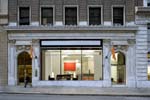 David Wakely Photography For Kimball Office's showroom relocation in San Francisco, the furniture manufacturer selected a building that allowed the project team to make upgrades to the retail floor's mechanical, electrical, and plumbing systems that were independent of the entire building and facilitated meeting aggressive LEED-CI goals. 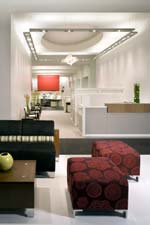 David Wakely Photography Kimball Office, San Francisco 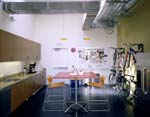 Sharon Risedorph Photography In lieu of a dedicated bicycle parking in the building's compact garage, the kitchen at Beverly Prior Architects' office, designed by Huntsman, uses wall-mounted brackets to store bikes vertically. 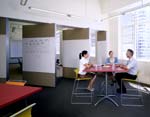 Sharon Risedorph Photography The space capitalizes on the height of the top floor by combining conference areas and break rooms for training and other staff functions. 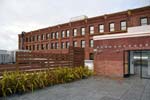 Sharon Risedorph Photography In San Francisco, ServiceSource chose to locate its headquarters in a renovated building whose owner was committed to exploring sustainable strategies such as designated bicycle parking, a comprehensive recycling program, and the addition of an outdoor roof deck for the tenant's use. 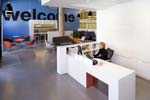 Sharon Risedorph Photography ServiceSource reception area 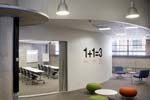 Sharon Risedorph Photography ServiceSource training space 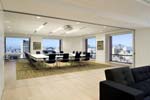 Sharon Risedorph Photography A new office for the Dutch Consulate in San Francisco is targeted to achieve LEED Silver, incorporating environmentally sound materials and providing access to daylight and views for all occupants. A sophisticated lighting control system dims fixtures in response to daylight levels and ties into a new building-wide energy management system implemented by the landlord as part of the building's LEED-EB pursuits. 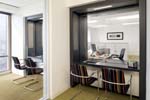 Sharon Risedorph Photography Dutch Consulate, San Francisco 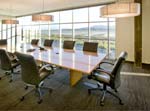 Devcon Construction CamelBak, a leading manufacturer of portable hydration devices, partnered in its LEED certification efforts with RNM Properties, which positioned this two-building office park in Petaluma, CA, to attract ecologically minded tenants. A nearby wetlands reserve serves as the property's most popular amenity.  Devcon Construction CamelBak, Petaluma, CA: a nearby wetlands reserve serves as the property's most popular amenity.  Photo credit: Huntsman Architectural Group For the office expansion of Dolby Laboratories in San Francisco, the building owner and tenant shared the same green building goals. The LEED-CI Gold tenant space was planned at the same time that building management investigated the potential for pursuing LEED-EB. 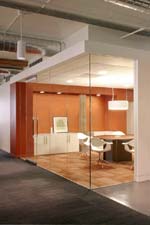 Huntsman Architectural Group Dolby Laboratories, San Francisco |
© 2010 ArchNewsNow.com